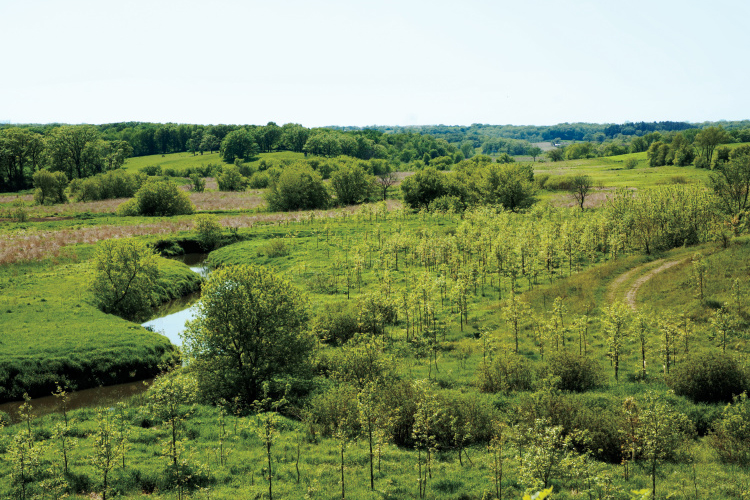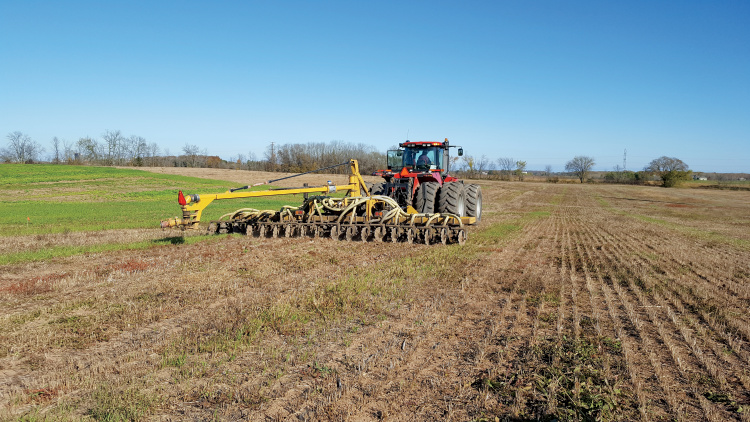Home > Wisconsin > Wisconsin Environment > Farmers Lead Wisconsin Watershed Conservation Efforts
Farmers Lead Wisconsin Watershed Conservation Efforts
In partnership with: Wisconsin Department of Agriculture, Trade and Consumer Protection.
 Wisconsin is serious about conservation, and its farmers are leading efforts across the state to ensure watersheds are protected. The state’s top agricultural agency is also there to help.
Wisconsin is serious about conservation, and its farmers are leading efforts across the state to ensure watersheds are protected. The state’s top agricultural agency is also there to help.
The Wisconsin Department of Agriculture, Trade and Consumer Protection (DATCP) developed the Producer-Led Watershed Protection Grant program in an effort to improve the quality of the state’s waterways. In the program’s first two funding cycles, it awarded just under $440,000 to 15 different producer-led groups.
“This funding is helping the agricultural industry by leading a positive change toward more conservation agriculture,” says Rachel Rushmann, the program’s director. “It helps to increase participation in on-farm research and the adoption of conservation practices, which will ultimately lead to improved soil and water quality through a more informed and engaged agricultural community on best management practices.”
Working Together
One group at the helm of these producer-led initiatives is the Milwaukee River Watershed Clean Farm Families organization. It is made up of farmers in Ozaukee County – Jim Melichar, Bob Roden, Neal Maciejewski, Mike Paulus, Dave Brunnquell and Joe Roden – who wanted to do their part in conservation, as well as demonstrate that they care about the area’s land and water as much as urban residents do. Together, these producers farm between 6,000 and 7,000 acres, most of which are in the Milwaukee River Basin.
The group meets regularly and works with county land and water conservationists, agribusinesses, local land trusts, the Milwaukee Metropolitan Sewerage District, and the U.S. Department of Agriculture’s Natural Resources Conservation Service. It organizes promotional and educational materials, and holds workshops and field days.
Field days are a way to communicate directly with producers about methods and technologies that help protect the soil and water resources. Farmers get the opportunity to learn about conservation tillage equipment, cover crop seed application and low-disturbance manure injection.
Thanks to the grant program, financial help is also available for qualifying applicants. This money can help offset some of the costs of cover crop seed planting or help pay for the rental of low-disturbance manure-injection equipment or no-till, strip-till, ridge-till or mulch-till equipment.
“We’ve seen that these groups can be really effective in helping to increase the adoption of conservation practices and farmer participation in their watersheds through farmer-to-farmer outreach and education,” Rushmann says.

Peninsula Pride
More than 40 farmers in Kewaunee and Door counties joined together to promote conservation efforts in their area. Peninsula Pride Farms is made up of farmers in northeastern Wisconsin and serves as an environmental stewardship coalition to bring together the agricultural community, university research and scientists to meet water quality challenges.
Peninsula Pride received a grant to work with farmers to protect groundwater through protective land management practices. Like the Milwaukee watershed group, they reach these producers through field days, the creation of educational materials and on-farm demonstrations.
“Farmers, by nature, are innovative problem solvers,” says Don Niles, a dairy farmer in Casco, who led the organization of the group. “We can be most effective by working toward solutions in a collaborative manner.”
Producer-Led Watershed Protection Grant funds can assist farmers engage in conservation methods, including paying for the rental of low-disturbance manure-injection equipment.
 Planning for the Future
Planning for the Future
In fiscal 2016 and 2017, DATCP awarded grants from an appropriation of $250,000, with the maximum award to any producer-led group of $20,000 each fiscal year.
Its farmer groups range in size from five to over 50 members and funded projects include group startup costs, farmer-to-farmer outreach and education, incentive payments for practices, research on cover crops and nitrogen use efficiency, and recruitment and branding.
Rushmann says the groups track their successes through several metrics including number of hours spent on planning activities, number of acres of conservation
practices installed, completed work plans, number of soil samples taken, attendance at outreach events, increase in number of group participants and partnerships, number of farm assessments, number of new farms involved in the group, and more.
“This is a unique program that gives producers the opportunity to lead a change in their local communities,” Rushmann says. “They have and can accomplish great things to help improve everyone’s understanding of agriculture and protect our soil and water resources.”
To inquire about grant funding, visit datcp.wi.gov or contact rachel.rushmann@wisconsin.gov.



